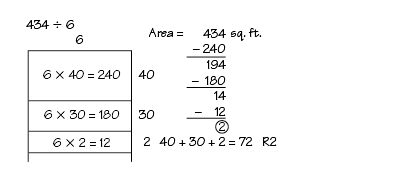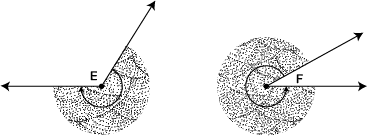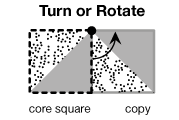R
range (finding a)
The range of a set of data is the difference between the highest and lowers numbers in the data.
pages 277, 542
ray
A part of a line that has one endpoint and extends indefinitely in one direction.

pages 374, 377, 378, 380–381, 386–391
rectangle
A quadrilateral with four right angles.

pages 63–64, 66–71, 72–73, 79–83, 84–85, 86–87, 103–105, 320–321, 333, 359, 376, 408–409, 423–424, 426, 489
rectangle method
Using a rectangle as a tool to help solve multiplication problems.

pages 156, 267, 270, 280, 286, 489–493, 495–497, 499, 506, 538–540, 544
rectangle model (for division)

pages 489–493, 495–497, 499, 538–540, 544
reflex angle
An angle larger than 180° but less than 360°.

pages 380–381, 389, 392, 394–395
regular polygon
A polygon is regular if all sides are of equal length and all angles are equal.

pages 397, 439
remainder
Something that remains or is left after a whole number division problem. The portion of the dividend that is not evenly divisible by the divisor, e.g., 16 ÷ 5 = 3 with 1 as a remainder.
pages 257, 259, 533, 537, 539, 549
repeated addition
Adding a number to itself a certain number of times.

responding variable
The variable whose value results from the experiment. Experimenters find the values of the responding variable by doing the experiment. The responding variable is often called the dependent variable.
pages 185–186, 475–476, 561–562, 573
rhombus
A quadrilateral with four sides of equal length.

pages 408–411, 423–424
right angle
An angle that measures 90°.

pages 368–369, 372, 374–376, 381, 385, 395, 399–400, 420–421, 424, 436
right triangle
A triangle that has one right angle.

pages 400, 403, 422, 438, 443, 446
Roman Numerals
A system of representing numbers used by the Romans. The symbol I represents 1, V represents five, X represents ten, etc.
rotation
A transformation (motion) in which a figure is turned a specified angle and direction around a point. The size of the angle depends on the amount of turning, or rotation. (See also turn.)

pages 378–379
round(ed) number
Round numbers are used when estimating because they are convenient to think about. We can make estimates by first rounding numbers to the nearest tens, hundreds, thousands, etc.
pages 146, 148, 238–240, 243–244, 271
rounding
Replacing a number with the nearest convenient number.
pages 146–148, 238, 240, 248
row
In an array, the objects lined up horizontally, or going across.

pages 66–71, 72–73, 79–83, 84–85, 103, 157, 161–162, 264–270










